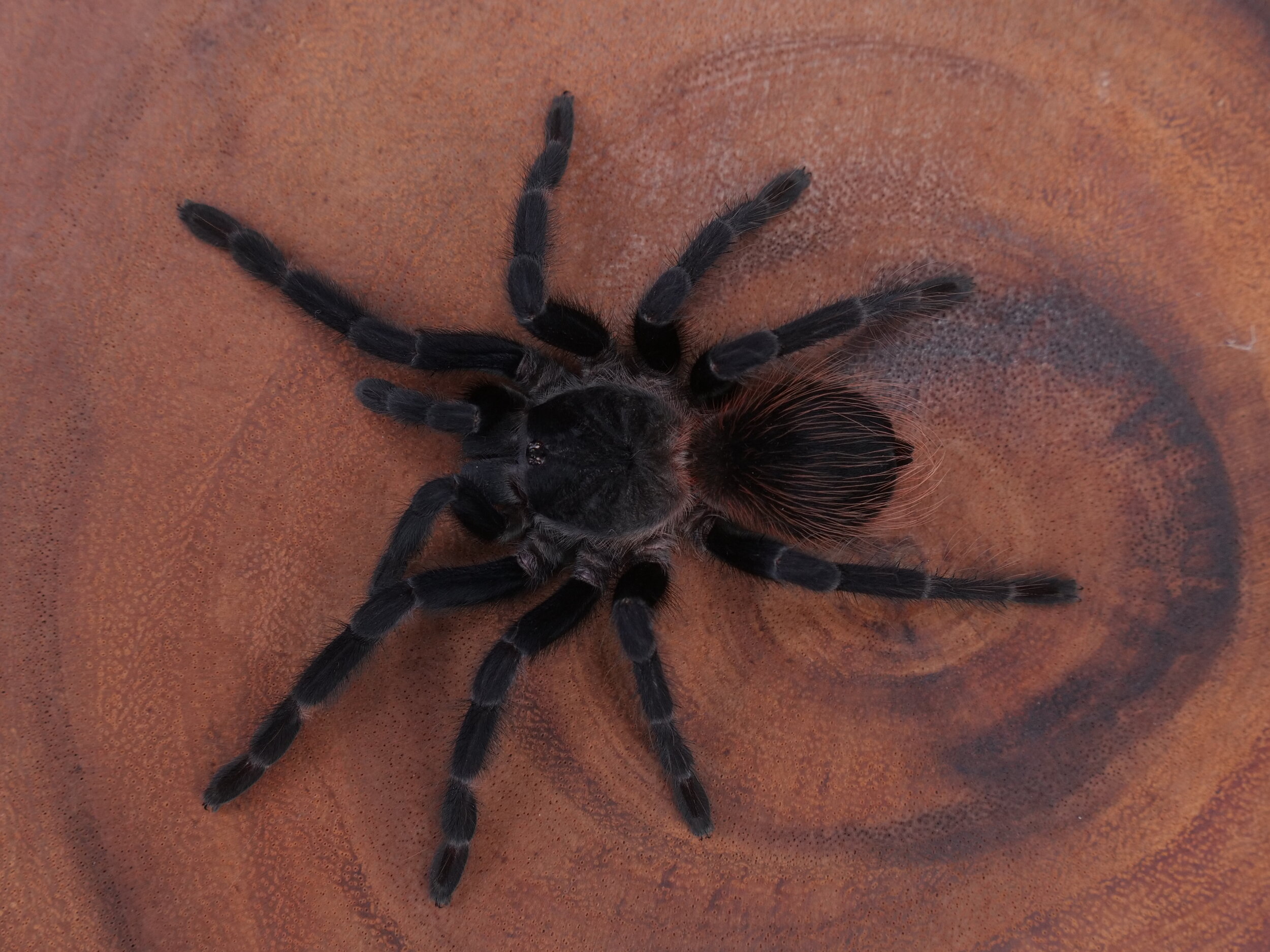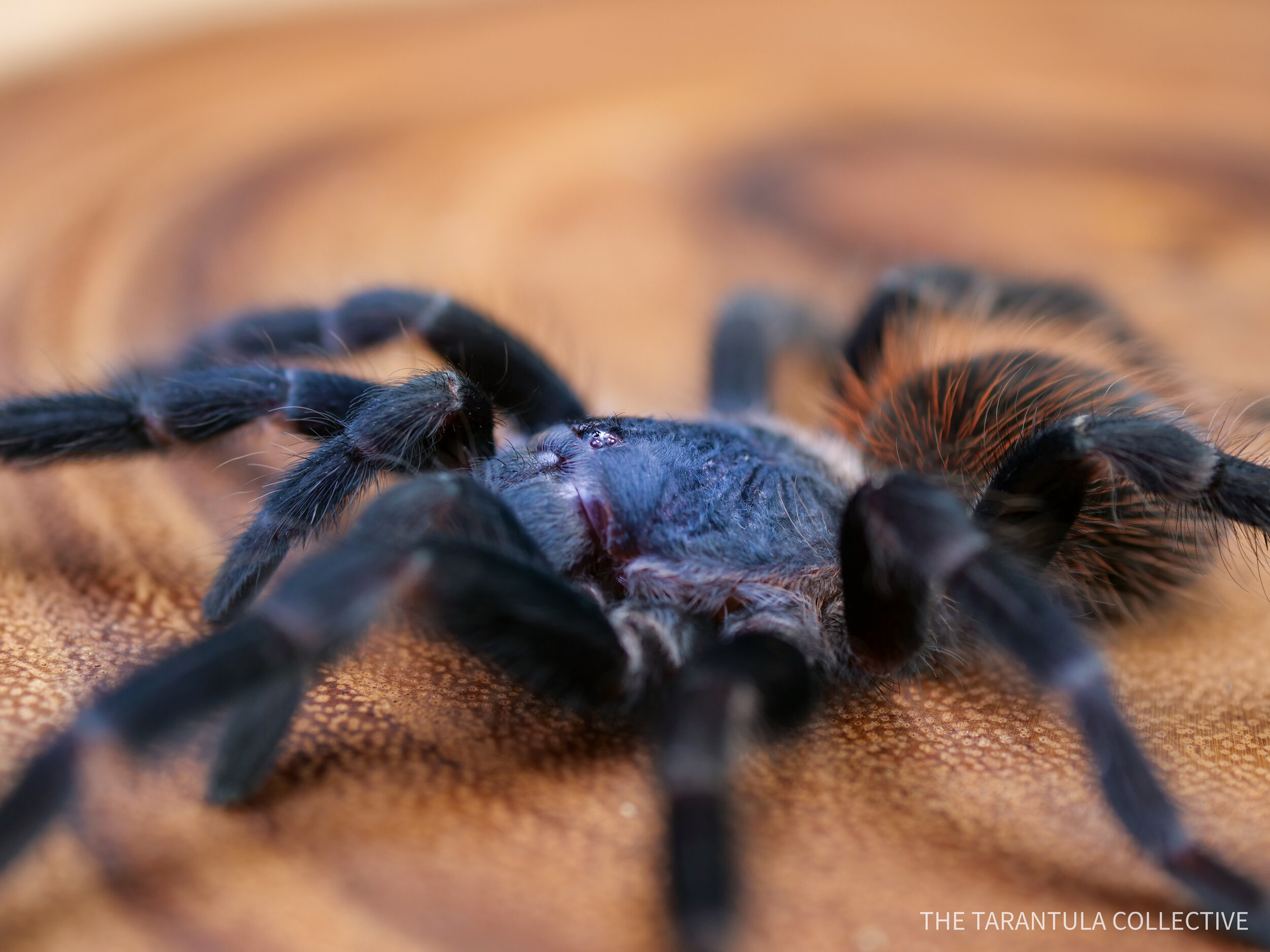Brazilian Blue Tarantula (Pterinopelma sazimai) Care Sheet & Husbandry
Care & Husbandry Video
In this video I share my experience and thoughts on how I keep my Pterinopelma sazimai. I also share some background info and interesting facts about the Brazilian Blue Tarantula.
Scientific Name: Pterinopelma sazimai
Common Name: Brazilian Blue Tarantula or Iridescent Blue Tarantula
Type: Terrestrial, Opportunistic burrower
Location: Brazil, Bahia, Minas Gerais, Chapada Diamantina
Diagonal Leg Span (DLS): 5.5-6”” (14-16cm)
Growth Rate: Medium
Life Expectancy: not enough info yet
Recommended Experience Level: Intermediate
Pterinopelma sazimai, also known as “Brazilian blue tarantula” or “Iridescent blue tarantula”, is a gorgeous NEW WORLD tarantula from the Bahia and Minas Gerais regions of Brazil. This is a very colorful blue tarantula that has been smuggled repeatedly to America and Europe and due to its shrinking habitat from deforestation, wildfire, and urban sprawl and farming, this tarantula is now endangered in its native location. Which makes it even more important to make sure you are getting your specimen from a reputable dealer that sells captive bred tarantulas. At first glance they don't look very blue and when they are in premolt, they look almost a grayish black. But right after a molt, you can see the blue hue with bright red setae that is even more apparent once you add a little direct light. This is a truly gorgeous specimen but they can be very skittish and a little defensive, so not the best choice for a beginner tarantula keeper.
The P. sazimai is found in the eastern part of Brazil and is in an environment that is very cool in the winter and very hot in the summer. They experience heavy rainfall as well as long periods of little moisture so they are very adaptable to their environment. They will usually burrow deep when they are looking to escape the heat or find more humidity, so you need to make sure you provide them with a nice depth of substrate. They are quick to throw a threat posture and kick hairs when they feel threatened and are very fast and will usually prefer to dive into their hide before showing any defensive behaviors. This is not a species that I would recommend trying to handle but can be a gorgeous specimen to have on display.
I seat up my spiderlings in my basic spiderling enclosures like any other New World terrestrial species. I fill the enclosure up at least 2/3rds with substrate as they prefer to burrow deep as spiderlings. I keep the substrate damp, but not swampy and provide a tiny water dish if there is room or drip water down the sides of the enclosure once or twice a week. Because this species prefers a more humid environment as spiderlings, I tend to not use coco fiber and opt for a substrate like Creature Soil or Jungle Mix as these tend to hold moisture better and also hold their shape better so there is less worry of burrows collapsing. I provide a small hide though they tend to just burrow deep and stay there for weeks or months at a time. They are pretty hardy as spiderlings and as long as you keep the substrate slightly damp, you will have no issues raising the juvenile stage.
I keep my juvies in a basic acrylic terrestrial juvenile enclosure. I still use a creature soil or jungle mix, though I will sometime mix it half and half with coco fiber to help stretch it out. I prefer to keep this species at this size in an enclosure that offers more cross ventilation as opposed to top ventilation, though that isn’t a necessity. I just find the cross ventilation provides plenty of fresh air while maintaining a slightly higher humidity. I provide a cork bark hide and water dish and keep the substrate slightly damp in one corner by overflowing the water dish from time to time and letting it dry out slightly in between. It is important to not over due the dampness of the substrate as it can encourage mold growth and mushroom and this isn’t necessarily a high humidity species. Keeping the water dish full and dampening the substrate from time to time should be plenty.
And for sub adults and adults, I move them into a 2.5-5 gallon style enclosure. I prefer to use the acrylic enclosures like these from Tarantula Cribs, but a glass aquarium of this size will work just as well. Just make sure it has a tight fitting lid that can be securely locked down and avoid using the thin screen mesh lids and instead opt for the thick mesh lids as they are too large for the tarantula to get its feet stuck. I use coco fiber or any of the other substrates I have mentioned so far and fill the enclosure halfway to ⅔ with substrate and provide a hide and water dish as well as a few decorations. Even as adults this species can dig a deep burrow and stay hidden for long periods of time even sealing up their burrow, so if your P. sazimai goes into hiding, it isn't anything to worry about.
As far as feeding, I give my spiderlings a small cricket or roach, no larger than ⅔ the size of the sling twice a week. If there is no feeders available smaller than the sling, I will prekill the prey or cut it up in pieces as they will scavenge feed at this size. I remove any unwanted prey by the next day to avoid issues with mites and mold and wait 2-3 days after a molt before attempting to feed again. Juveniles I will feed 2-3 medium crickets or two small roaches once a week. If the tarantula is in premolt, I will offer prey and remove the prey within 24 hours if it hasn’t eaten it by then and try again in a week or two. Sometimes, even though the t is has sealed off its burrow and I haven’t seen it in weeks, i will still leave a few crickets in there for 24 hours as they will sometimes venture out at night and reseal themselves in their burrow before morning, so they are actually out and about I just don’t realize it because I was sleeping. I usually wait about 5-7 days after a molt before attempting to feed them again so they have time to harden up. And as adults I will feed them 6-8 large crickets or a large Dubia roach once every other week depending on the size of the abdomen. If they are looking thin, especially after a molt, I will feed them once a week, or just offer more prey every other week. And as they get plump will cut back on amount and frequency so they don’t become overfed. I usually wait 10-14 days after a molt before offering food again. I try not to overfeed my tarantulas so a lot of the schedule as adults is based on their abdomen size.
Overall this is a great intermediate species and a must have for your collection once you are comfortable keeping a feisty species. The only draw back is that for such a gorgeous spider, they tend to spend a lot of time in their burrows and don’t stay out on display like a lot Grammostola and Brachypelma species. But when they are out, they are very exciting to watch and they have an intense feeding response which is always exciting. As long as you keep their water dish full, this species is pretty simple to keep and I highly recommend picking one up when you have the chance.











